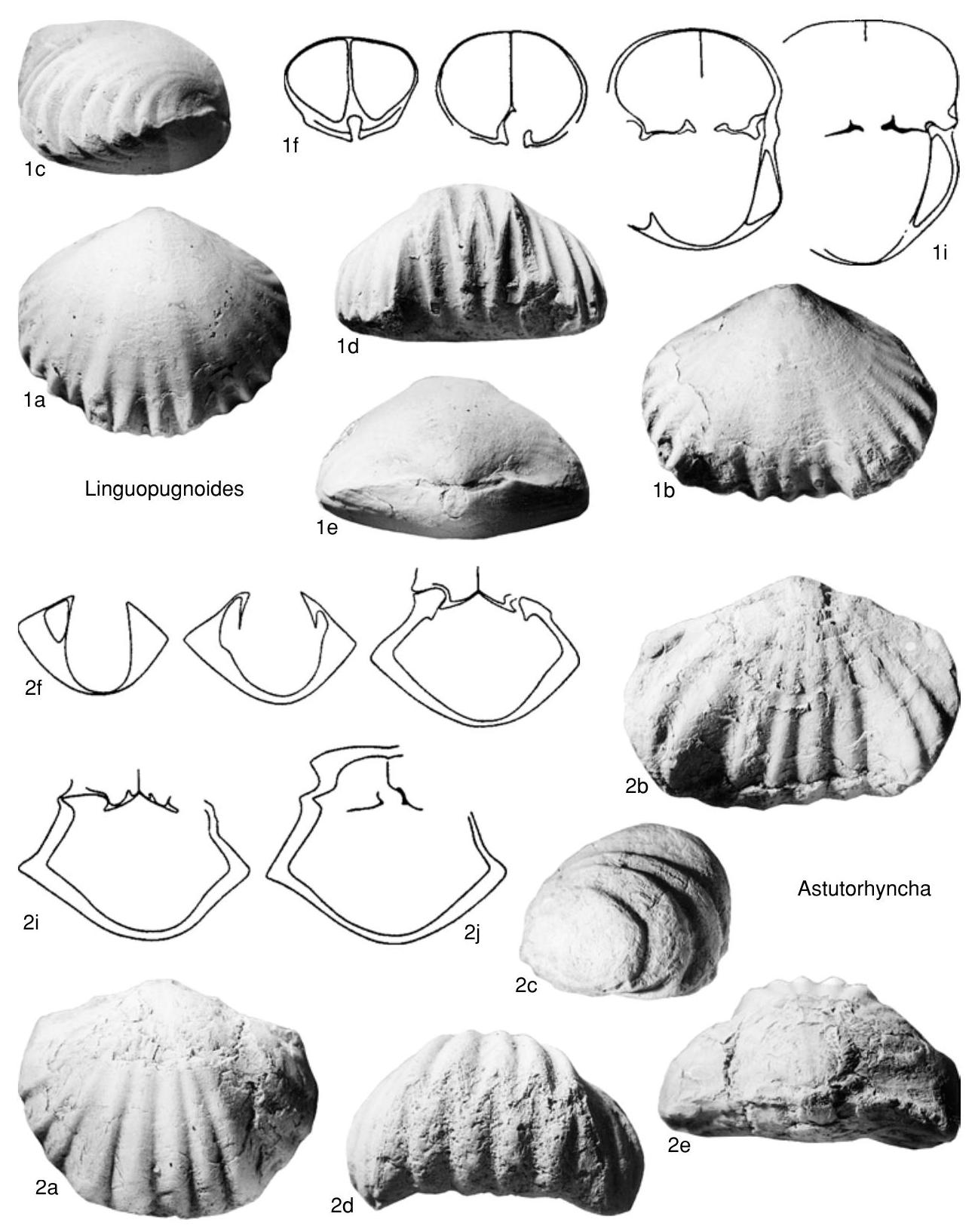Welcome to the Treatise on Invertebrate Paleontology!
Please enter a genera name to retrieve more information.

Linguopugnoides
Classification
Phylum:
Brachiopoda
Subphylum:
Rhynchonelliformea
Class:
Rhynchonellata
Order:
Rhynchonellida
Superfamily:
Camarotoechioidea
Family:
Camarotoechiidae
Subfamily:
Linguopugnoidinae
Formal Genus Name and Reference:
Linguopugnoides HAVLÍČEK, 1960, p. 242
Type Species:
Rhynchonella nympha var. carens BARRANDE, 1879b, pl. 122, OD
Images
(Click to enlarge in a new window)
Fig. 770, 1a-i. *L. carens (Barrande), Lochkovian, Lochkov Limestone, Prague, Svaty Jan, Bohemia, a-e, lectotype, dorsal, ventral, lateral, anterior, and posterior views, x1.75 (new), f-i, serial sections 12.35, 12.15, 11.8, 11.6 ~mm from anterior, x3.3 (Havlíček, 1961).
Synonyms
Geographic Distribution
cosmopolitan
Age Range
Beginning Stage in Treatise Usage:
lower Silurian (upper Llandovery)
Beginning International Stage:
Telychian
Fraction Up In Beginning Stage:
0
Beginning Date:
438.59
Ending Stage in Treatise Usage:
Lower Devonian (upper Emsian)
Ending International Stage:
Emsian
Fraction Up In Ending Stage:
100
Ending Date:
394.3
Description
Subcircular to subpentagonal outline and dorsibiconvex profile, lateral and anterior margins steep, beak incurved, delthyrium open, foramen may migrate to mesothyrid position in mature specimens, fold and sulcus distinct, extending from umbones, anterior commissure uniplicate, tongue broad, high, dentate, costae coarse, low, simple, subangular, from midlength, weak on flanks, dental plates well developed, high, thin, convergent ventrally, ventral muscle field not deeply impressed, dorsal median septum short, thin, septalium short, deep, narrow, hinge plates dividing immediately anterior of septalium, crura slender, ventrally curved, tips laterally flattened
References
Museum or Author Information
Classification
Phylum:
Brachiopoda
Subphylum:
Rhynchonelliformea
Class:
Rhynchonellata
Order:
Rhynchonellida
Superfamily:
Camarotoechioidea
Family:
Camarotoechiidae
Subfamily:
Linguopugnoidinae
Formal Genus Name and Reference:
Linguopugnoides HAVLÍČEK, 1960, p. 242
Type Species:
Rhynchonella nympha var. carens BARRANDE, 1879b, pl. 122, OD
Images
(Click to enlarge in a new window)
Fig. 770, 1a-i. *L. carens (Barrande), Lochkovian, Lochkov Limestone, Prague, Svaty Jan, Bohemia, a-e, lectotype, dorsal, ventral, lateral, anterior, and posterior views, x1.75 (new), f-i, serial sections 12.35, 12.15, 11.8, 11.6 ~mm from anterior, x3.3 (Havlíček, 1961).
Synonyms
Geographic Distribution
cosmopolitan
Age Range
Beginning Stage in Treatise Usage:
lower Silurian (upper Llandovery)
Beginning International Stage:
Telychian
Fraction Up In Beginning Stage:
0
Beginning Date:
438.59
Ending Stage in Treatise Usage:
Lower Devonian (upper Emsian)
Ending International Stage:
Emsian
Fraction Up In Ending Stage:
100
Ending Date:
394.3
Description
Subcircular to subpentagonal outline and dorsibiconvex profile, lateral and anterior margins steep, beak incurved, delthyrium open, foramen may migrate to mesothyrid position in mature specimens, fold and sulcus distinct, extending from umbones, anterior commissure uniplicate, tongue broad, high, dentate, costae coarse, low, simple, subangular, from midlength, weak on flanks, dental plates well developed, high, thin, convergent ventrally, ventral muscle field not deeply impressed, dorsal median septum short, thin, septalium short, deep, narrow, hinge plates dividing immediately anterior of septalium, crura slender, ventrally curved, tips laterally flattened
